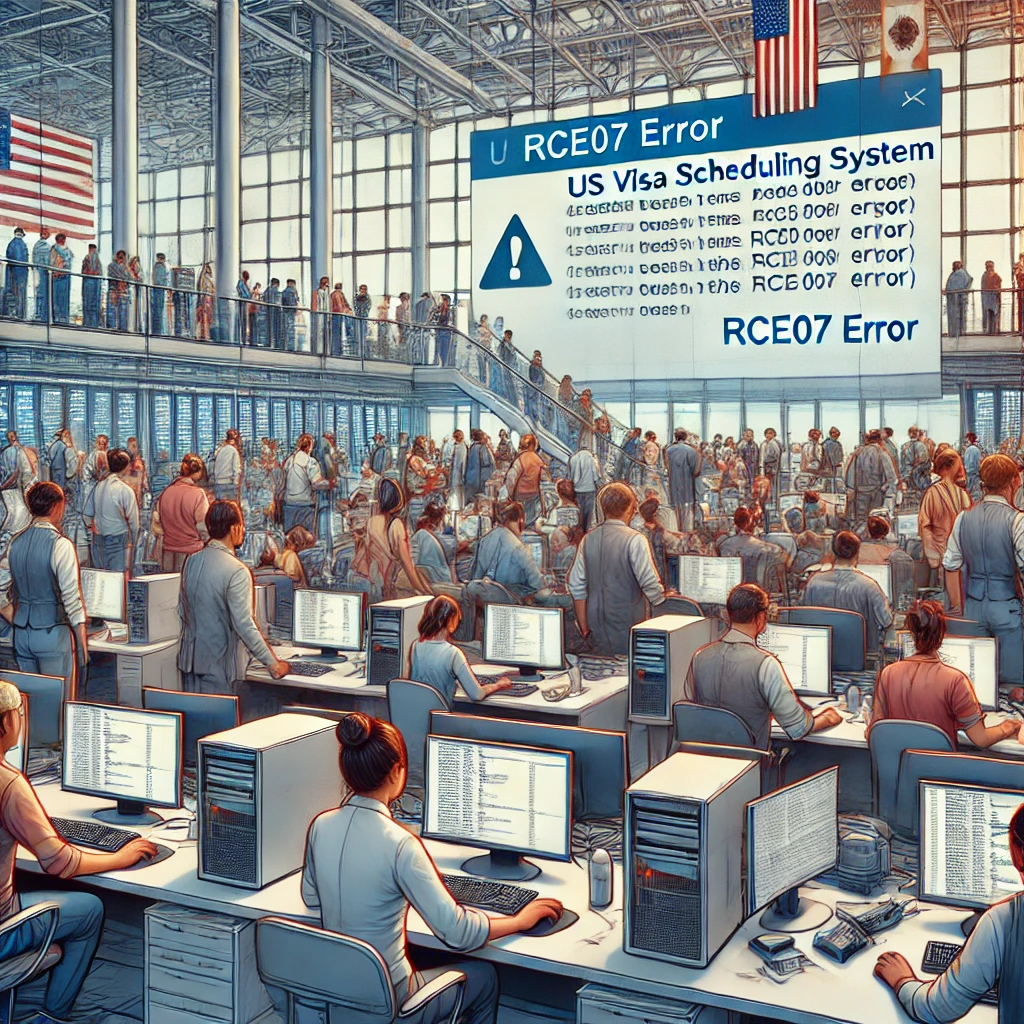Introduction: Understanding the Rce07 Error Us Visa Scheduling
Navigating the complex world of US visa scheduling can be challenging, and one of the most frustrating obstacles applicants may encounter is the RCE07 error. This technical glitch has become a significant hurdle for many individuals seeking to schedule their visa appointments through the US Department of State’s online system. The Rce07 Error Us Visa Scheduling not only disrupts the appointment process but also adds an additional layer of stress for applicants eager to finalize their travel plans.
What Exactly is the RCE07 Error?
The RCE07 error is a system-specific error code that appears during the US visa appointment scheduling process. It typically indicates a failure in processing user requests within the appointment scheduling platform. This error can be triggered by various factors, ranging from server overloads to data mismatches in user profiles.
Several Factors Contributing to the RCE07 Error
Understanding the root causes of the rce07 error us visa scheduling is essential for both applicants and system administrators. The error may arise from:
- Server Overload: High traffic volumes can overload the scheduling system’s servers, leading to temporary disruptions.
- Data Synchronization Issues: Inconsistencies between the data entered by applicants and the information stored in the database can trigger errors.
- Software Updates: Occasionally, updates or patches to the scheduling system can introduce unexpected bugs that result in the RCE07 error.
Technical Implications of the RCE07 Error
The RCE07 problem stems from the complex technological infrastructure that supports the US credit scheduling program. This infrastructure includes multiple layers of software, databases, and server networks, all of which must function seamlessly to facilitate the scheduling process. When the RCE07 error occurs, it can indicate underlying issues in these technical components that require immediate attention.
Key Potential Causes of the RCE07 Error
Delving deeper into the specific causes, the RCE07 error can be attributed to:
- Database Access Issues: Problems in accessing or querying the database effectively.
- Faulty Session Handling: Errors in managing user sessions within the system, often leading to timeouts or session expirations.
- Configuration Errors: Improper system configuration or setup can lead to this persistent error.
Impact on the Visa Scheduling Process
The occurrence of the RCE07 error can significantly delay the visa scheduling process, causing inconvenience and potential delays in travel plans. For some applicants, these delays can mean missing important deadlines or opportunities.
Troubleshooting the RCE07 Error
For users encountering this error, several troubleshooting steps can be taken:
- Refreshing the Browser: Sometimes, simply refreshing or restarting the browser can resolve the issue.
- Clearing Browser Cache: Clearing the cache or trying a different browser can help if the problem is related to local browser settings.
- Contacting Support: If the error persists, contacting the technical support team for the scheduling system is advisable.
Advanced Technical Resolution Methods
For system administrators, resolving the RCE07 error may involve:
- Conducting System Diagnostics: To identify and rectify server or software issues.
- Enhancing Server Capacity: Upgrading hardware or enhancing server capacity to handle high traffic volumes more effectively.
- Database Optimization: Optimizing database operations to ensure faster and more reliable access.
System Limitations and Considerations
When addressing technical issues like the RCE07 error within the US visa appointment scheduling system, it is imperative to understand and address the inherent limitations of the current infrastructure. These limitations often involve the system’s capacity to manage high volumes of simultaneous logins and process extensive data without performance degradation. Such capacity issues can lead to system timeouts, slow response times, and ultimately, errors like RCE07.
Key System Constraints
- Scalability: The ability of the scheduling system to scale effectively during peak times is crucial. Systems that are not designed to scale dynamically can suffer from reduced performance under increased loads, contributing to errors.
- Concurrency Handling: The system must be equipped to handle multiple user requests simultaneously without losing performance or accuracy, ensuring that user sessions are managed efficiently.
- Data Management: Robust data handling capabilities are essential to prevent inconsistencies and synchronization issues that might trigger errors like RCE07.
Addressing these limitations involves enhancing technical infrastructure, optimizing software applications, and possibly redesigning certain aspects of the system to improve reliability and user experience.
Comparing the RCE07 Error with Other Visa Scheduling Errors
The RCE07 error, while not unique in the landscape of technical problems, is notable for its indication of broader systemic issues as opposed to individual user errors. This contrasts with other common scheduling errors that may arise from incorrect user inputs or isolated technical glitches affecting single users.
Systemic vs. Isolated Errors
- Systemic Errors: These are indicative of underlying issues within the system’s architecture or design, such as the RCE07 error, which reflects broader challenges like inadequate server capacity or flawed session management.
- Isolated Errors: These typically occur at the user level and might include errors due to incorrect information provided by the user or specific account-related issues.
Future Updates on the RCE07 Error in US Visa Scheduling
To mitigate the impact of the RCE07 error and prevent its recurrence, continuous monitoring and regular updates are critical. Future updates to the visa scheduling system should focus on both enhancing system capabilities and improving user interface design to prevent common user errors.
Strategies for Future Enhancements
- Continuous System Monitoring: Implementing advanced monitoring tools to actively detect and address performance bottlenecks and errors in real-time.
- Incremental System Updates: Adopting a strategy of incremental updates to the system software can help in managing changes more effectively and reducing the likelihood of new errors being introduced.
- User Feedback Integration: Engaging with users to gather feedback on their experiences can provide valuable insights into how the system performs under real-world conditions and what improvements are most needed.
Conclusion: Mitigating the Impact of the RCE07 Error
In conclusion, the Rce07 Error Us Visa Scheduling is a complex issue that requires a multifaceted approach to resolve. By understanding its causes, impacts, and troubleshooting methods, both applicants and administrators can better navigate this challenge, ensuring smoother visa scheduling experiences in the future.


